International Business
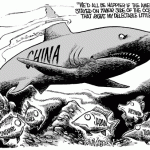
Free trade can be defined as “a policy by which a government does not discriminate against imports or interfere with exports by applying tariffs (to imports) or subsidies (to exports)” (Britannica, 2014, online). In simple terms, free trade can be explained as an absence of government intervention to the practices of selling to and buying from another country. Promoted by famous economist Adam Smith and David Ricardo, perceived advantages of free trade include benefits to be gained from specialisation practices engaged by countries according to their competitive advantages. This benefit based on theoretical frameworks of absolute advantage and comparative advantage. Specifically, according to the theory of absolute advantage proposed by Smith (1976), countries are perceived to have absolute advantage in producing a product if the production is facilitated in the most efficient way than other countries. Comparative advantage proposed by Ricardo (1817), on the other hand, refers to “the ability to produce a specific product more efficiently than any other product” (Pride et al., 2011, p.70). According to theories of absolute advantage and comparative advantage focus on manufacturing products that can be produced more efficiently than other countries and trading these products for other products with different countries generates more economic gain and value compared to attempts to diversify production within a single country. A basic classical example of trade of two products between two countries found in the most economics textbooks illustrate the advantage of free trade in the most effective manner. Moreover, free trade encourages competition in the market, motivating local producers to find and utilise sources for competitive edge on a constant basis, and high level of competition in the market offers benefits to consumers in terms of more variety of products and services, higher quality, and competitive prices. Another advantage of free trade can be specified…
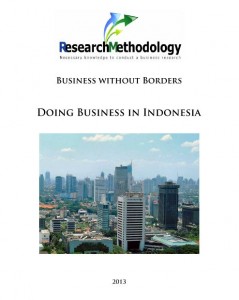
The report starts with the identification of gap in the knowledge about doing business in emerging markets in general, and Indonesia in particular. This is followed by providing recommendations to managers in relation to dealing with specific issues and practices they are likely to be faced with in Indonesia. The report is concluded by providing a summary of the key points of the research and mentioning the key points of advice. International market expansion opportunities for businesses enabled by intensive economic globalisation during the last several decades have increased the numbers of international assignment for managers at top levels. Importantly, “international managers need to have a clear view of where they want their firm to be in the future; they have to organise to implement their plans; they have to motivate those who work for them; and they have to develop appropriate control mechanisms” (Griffin, 2010, p.161). However, implementation of all of these tasks in practical levels is associated with a set of significant difficulties that relate to cross-cultural differences, family adjustment issues in a new country, language adaptation challenges and others. This report advises managers seeking to work in an emerging market on management practices in an international and cross-cultural context focusing on Indonesian consumer electronics market. The main reasons for the choice of Indonesia as an emerging market to be discussed in this report relates to the importance of Indonesia Investment Guarantee Fund – the best practice guarantee facility for investors and the potential possessed by Indonesia to become the next member of BRIC (Wagner, 2012, online) with positive implications on the performance of businesses operating in this country. 1. Introduction 1 2. Identification of Gaps in Knowledge 2 3. Recommendations Regarding Issues and Practices in Indonesia 4 3.1 Cross-Cultural Differences 4 3.1.1 National culture 4 3.1.2 Organisational…

Global forces impacting UK businesses include, but not limited to increasing scale of international trade, increasing levels of multiculturalism in UK organisations, increasing levels of inter-dependency of national economies and others. The impact of global forces on UK Business Organisations can be effectively analysed using PESTEL analysis where the abbreviation stands for political, economical, social, technological, ecological, and legal factors impacting businesses. The following table contains the application of PESTEL analysis in relation to businesses operating in the UK. Political The level of global political stability The level of bureaucracy in international affairs The extent of freedom of media Global trade control initiatives Threat of international terrorism Tariffs between the UK and other countries Global copyright, patent and intellectual property disputes Economical Impacts of intensifying economic globalisation Global economic crisis Sock market fluctuations Cost advantages possessed by emerging superpowers such as China, India etc. Impact of The World Bank and The World Trade Organisation Increasing importance of outsourcing and offshoring initiatives Social Changes in family values in global scale Changes in family patterns (same-sex marriages, single parents etc.) Increasing popularity of immigration and migration practices Increasing mobility between social classes Greater concern for minorities in society Technological Level of global technological infrastructure Industry-specific technological breakthroughs Regular emergence of innovative communication technologies Adoption of technology as competitive edge by increasing numbers of businesses Ecological Impacts of global warming tendencies Increasing levels of air and pollution Increasing level of sensitivity towards “green” problems among business stakeholders Activities and initiatives of global environmental organisations Legal Laws and regulations related to data protection Global data protection rules and regulations Increasing levels of “legal globalisation” Changes in cross-country employment and health and safety laws The case studies of Martin Lishman and Aquaco mentioned above represent a few cases where UK businesses benefit from…

International trade is the exchange of capital, products and services across borders. Advantages of international trade include greater utilisation of resources, importing products that can not be produced locally, and increasing the variety of choice to consumers. However, international trade may be associated with disadvantages as well such as loss of local jobs and high level of dependency on foreign markets. Significance of international trade to UK business organisations can be explained by referring to the concept of comparative advantage. According to the concept trade between two countries can be made in a mutually beneficial manner, if each country has comparative advantage to manufacture products to be traded. One of the leading English economists of the 19th century David Ricardo uses the cases of England and Portugal producing cloth and wine as it is presented in Table 2. According to Table 2, England possesses relative advantage in producing cloth as it less labour hours are required. Portugal, on the other hand, has relative advantage in wine production, because only 80 hours are required to produce wine as compared to 90 hours to produce cloth. Cloth Wine Ratio of price of wine to the price of cloth Ratio of price of cloth to the price of wine England 100 120 1.20 0.83 Portugal 90 80 0.88 1.12 Illustration of the concept of comparative advantage Source: Hunt and Lautzenheizer (2011) In other words, England can produce each unit of cloth for lower prices compared to wine, while for Portugal it is cheaper to produce each unit of wine than producing each unit of cloth. Accordingly, both England and Portugal can consumer maximum amounts of cloth and wine if they focus on producing products within their relative advantage, and engage in international trade. Impact of international trade to UK businesses can be illustrated…

Resource allocation plays an integral role in facilitation of a national economy in any country. Economic systems can be centrally-panned, free, and mixed and economic systems have a direct impact on the nature of resource allocation. UK has a free market economy, and accordingly resource allocation in the UK is facilitated purely according to the forces of supply and demand. In centrally-planned economies, on the contrary, such as former USSR “resource allocation plans and decisions are made by central government and then promulgated through government agencies” (Folsom and Boulware, 2004, p.58). In mixed economic systems, such as in China and present state of former USSR members, there are elements of both, free market and centrally-planned economies to varying proportions. The extent of presence free market and centrally planned elements in each mixed economy depends on a range of factors such as political agenda, the level of corruption, the levels of dependency on exports and imports etc. The effectiveness of free market economy such as in the UK has been traditionally perceived to be greater compared to alternative types of economies in terms effective resource allocation. However, global economic and financial crisis of 2008-2010 and its continuing implications have shed a light on inefficiencies associated with free market economy. Fiscal policy is a type of government economic policies that affect macroeconomic situation in the country. Impact of fiscal policy on businesses is evident and straightforward and this impact is facilitated through taxation, and the levels of government spending. Monetary policy is can be defined as government economic policy to control the supply of money through interest rates. In the UK the monetary policy is conducted by The Bank of England, whereas in Russia the Central Bank of Russia is responsible for monetary policy. The importance of adequate fiscal and monetary policies…
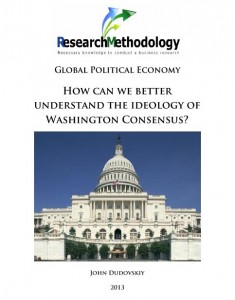
This paper critically analyses the ideology of Washington Consensus. The paper starts with discussions about factors and circumstances that have caused the emergence of Washington Consensus. This is followed by discussing positive implications of Washington Consensus for certain countries by referring to relevant facts. Moreover, the paper highlights major points of criticism of Washington Consensus and the attempts to assess the level of their validity of these points and discusses reasons and circumstances for introduction of Post-Washington Consensus also known as Washington Consensus II. The paper is completed by attempting to the future of Washington Consensus prescriptions in modern dynamic global geo-political environment. There always have been disparities between countries in terms of the levels of economic developments and this tendency is most likely to continue in the future. However, there have been attempts by highly developed countries to assist the level of economic development of developing countries through various programs involving financial aids and recommendations. A set of policy recommendations proposed by the US to developing countries has been known as Washington Consensus, and there are mixed opinions about the implementation and outcome of these recommendations (Bandelj and Sowers, 2010). Introduction 1 Emergence of Washington Consensus 1 Potential Positive Implications of Washington Consensus 4 Criticism of Washington Consensus and the Level of their Validity 6 Washington Consensus II and the Level of its Effectiveness 10 The Future of Washington Consensus 11 Conclusions 14 References 16 International Monetary Fund World Trade Organisation World Bank How do I receive the report? Once payment is made you will receive a link to you e-mail you have registered with on Pay Pal or the e-email you have entered when specifying bank details to download the report. The report is downloaded in PDF format. The link will stay active for 7 days. How can…
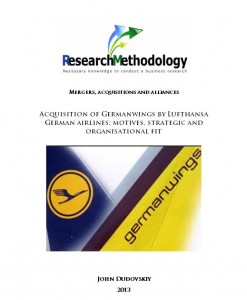
Mergers, acquisitions and formation of alliances are commonplace in global airline industry and they are fuelled by the search of competitive advantages in order to achieve long-term growth. However, the implementation of mergers, acquisitions and formation of strategic alliances in practice can be associated with a set of complex challenges that might include differences in organisational culture, clash of personalities within top level management, lack or absence of strategic fit between the two companies and others. Lufthansa Group is a global airline company that employs more than 120,000 workforces that have contributed to generate 713 million EURO through serving 100.6 million passengers during the year of 2011 alone (Annual Report, 2011). Germanwings is a budget airline company that employs 1355 members of staff and served 7.52 million customers in 2011 offering flights to more than 90 destinations with 33 Airbus A 319 airplanes (Facts and Figures, 2013, online). Germanwings is wholly owned by Lufthansa since 2009. This report investigates a range of business issues related to the acquisition of the budget airline Germanwings by Lufthansa German Airlines in 2009. The report starts with analysis of motives for choosing acquisition method among other alternatives by Lufthansa. This is followed by discussions of strategic and organisational fit between Lufthansa and Germanwings. Moreover, this report addresses potential gains and risks faced by Lufthansa due to the acquisition of Germanwings. The report is concluded with assessing outcomes relative to expectations in relation to this specific airline acquisition. 1. Introduction 1 2. The Motives for Choosing Acquisition Method by Lufthansa 2 2.1 Short Time Required to Complete the Acquisition 2 2.2 Willingness to Increase the Market Share 3 2.3 Overcoming Entry Barrier in Budget Airline Sector 4 2.4 Easiness of Integration 4 3. The Strategic and Organisational Fit between Lufthansa and Germanwings 5 4. The…
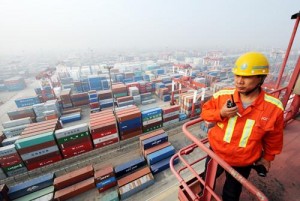
The “Open Doors Policy” or the economic reformations of the late 1970s in China enormously changed the entire economy of the country. The trade reformation which focused on liberalizing the trade which shifted the country a step closer to free market attracted huge foreign capital into the country in the form of FDI since 1978. The huge scarce resources of China had to be utilized soon after the reformations which indeed required huge capital. However,China heavily relied on the external funds in order to promote its manufacturing industry and the financing of newly privatized formerly state-owned companies. Therefore,China’s government issued series of policies which favoured the foreign investors. The inflows of foreign capital in the form of FDI brought in advanced technology, knowledge, management know-how which accelerated the economic growth in China in the last three decades. Since the “Open Doors” policy and trade reformations in the country in 1978, the country has been consistently achieving significant economic growth which averages at 10% of GDP. When the growth rate of China is compared to other developed economies such as USA which has an average of 3% GDP growth in the 100 years and Germany which has an average growth rate of 1.3% of GDP and Japan at 3.85% of GDP in the few decades, China is far ahead (IMF, 2009). However, many western policy makers and commentators believe that the main source of growth of China has been mainly due to FDI inflows which have been encouraged by fixed exchange rate. The source of economic growth of China is derived from three phases of development which are broken down into three periods of years. The first phase of development lasted from 1952-1978 where the Chinese government prioritized the development of heavy industries such as steel, chemicals and machinery. The second…

This article represents a brief analysis of diversification and expansion opportunities into Chinese market for a local restaurant and cafe in the UK. The article contains a brief overview of Chinese market, discusses market entry strategies available to the business, and discusses a range of most important factors impacting the business proposal. Overview of Chinese Market China is a newly emerging superpower, with the levels of GDP suppressing 72.1 trillion USD in 2011 (Statistical Yearbook, 2012) and the further increase has been forecasted with positive implications on the on the amounts of consumer spending. Currently, a set of multinational fast-food brands such as McDonald’s KFC, and Pizza Hut restaurants are increasing the level of their presence in an aggressive manner that can be interpreted as a signal for increasing level of demand in China towards foreign food and lifestyle. Market Entry Strategies Alternative market entry strategies the restaurant and café can employ in order to enter China consist of licensing, franchising, joint-ventures and wholly owned subsidiaries. Licensing involves local restaurants in China to trade under the license of the UK restaurant. This type of market entry offers the advantages of low risk and lower level of capital requirements. However, the disadvantages include limited scope of participation in operations, and lower potentials for generating significant revenues. Franchising is similar to licensing to a certain extent, but different in a way that it involves closer level of cooperation between the parties, and grants the right to a local business in China to use the logo and trademark of the restaurant in UK. Joint-ventures are another form of market entry available to the restaurant and café in the UK to enter China. The advantages of joint-ventures include shared risk and expenses, and gaining expertise in the local market. However, joint-ventures…

Intensifying forces of globalisation have caused the numbers of expatriates to increase in many counties around the globe. An expatriate is anyone “living or working in a country of which he or she is not a citizen and who can be classified as possessing skills critical to the success of the performance of foreign subsidiaries” (Weber, 2011, p.1). While the skills and competencies brought by expatriates can be highly beneficial for businesses, as well as, for the development of a host country economy; expatriate human resources are influenced by a range of factors. This article analyses the influence of international perspective of employment laws on expatriate human resources. Specific issues discussed in the article include labour law, expatriates, and the impact of legislations issued by international bodies upon expatriate human resources. Labour law and expatriates Specific issues covered by labour law in HR include recruitment and selection, pay and benefits, employment rights, employment contract, provision of training and development, assurance of equal opportunities for all employees, health and safety issues etc. Each of these issues can be analysed from the spectre of expatriate human resources. Recruitment and selection of expatriates differs from recruitment and selection of resident candidates in a way that specific attention needs to be paid to the issues of adaptability to a new culture, candidate’s level of cross-cultural awareness in general, and the level of empathy to the local culture in particular, family situation of candidates, his or her language skills etc (Briscoe et al., 2008). The issues of pay and benefits, as an important aspect of employment covered by employment law represent another point where expatriate human resources are directly influenced. Specifically, a set of related issues such as medical insurance of expatriates and their retirement plans are regulated to the labour law of local…
